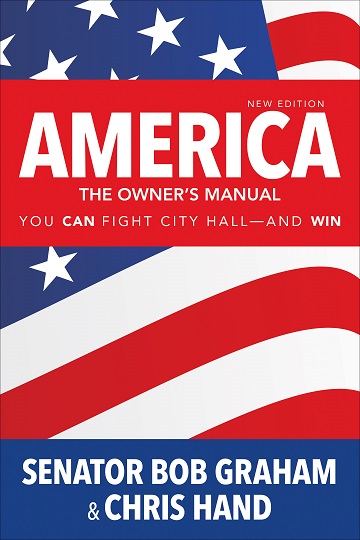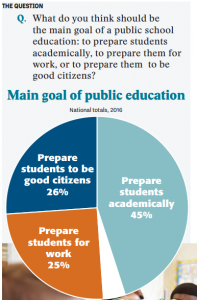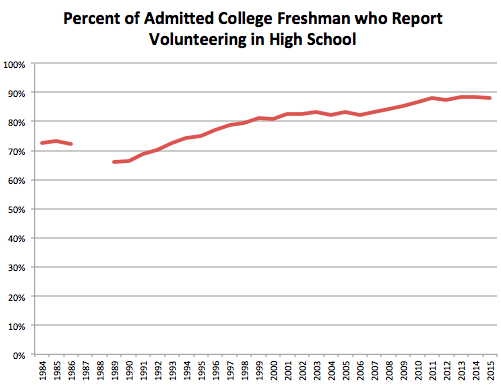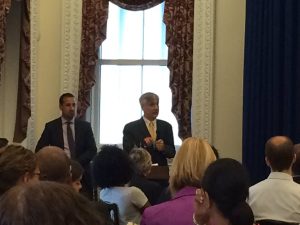I enjoyed a conversation with Dr. Matt Townsend yesterday on the topic of civic education. Here is the audio. Dr. Matt’s show has a national audience and is devoted to “talking about good.” We discussed the importance of learning to deliberate controversial current issues with people who disagree.
Category Archives: advocating civic education
should civic educators modify their neutral stance?
(Washington, DC) I’m here for the National Council for the Social Studies annual convention. Right after the election, the NCSS sent a “post-election message” that talked generally about the importance of teaching about government and civic engagement:
As social studies educators, we teach and learn about our system of government, about controversial and timely issues, and about making informed decisions as active participants and defenders of our democracy. Our civic duty did not end at the voting booth; in fact, it has just begun. We can share instructional practices about the electoral process, the upcoming transition plans for newly elected leaders at all levels, and the new teams that will play a central role in our conversations for the next several years. We teach the principles of our U.S. Constitution.
This message could have been sent after any presidential election in the past century. There was no mention of Donald Trump or anything unusual about the campaign or the condition of the republic. I am not necessarily critical of this stance, which reflects a deep-seated and well-grounded commitment to a certain form of political neutrality. Many other schools, districts, universities, and nonprofits have taken a similar stance. However, civic educators must at least consider whether a different set of principles should apply in 2016.
Here are some arguments for neutrality:
- It’s dangerous for an arm of the state, a public school, ever to take sides on political issues. Citizens are forced to pay for public education and face considerable pressure to turn their kids over to these institutions. Children form an impressionable, captive audience in the classroom. Teachers have great power over students’ life-prospects. It’s unethical for them to use that power to change children’s political views.
- If teachers take–or imply–critical positions about any particular party or leader, elected officials and electoral majorities can press them to take different positions. Neutrality is no longer a shield.
- We are all subject to bias. Teachers split their votes between Clinton and Trump, but a majority preferred Clinton, and in big city districts on the coasts, the ratio was no doubt very high. Like everyone, Trump opponents need to remember that they could be wrong. Lots of people believe that Barack Obama is a dangerous enemy of American values. I heartily disagree, but this disagreement shows that judgment is fallible. A critical estimate of Donald Trump is a judgment, not a simple matter of fact. The “text” that we must interpret is the vast quantity of his statements over many months. People hear different points and take different messages from all this verbiage. Those of us who think Donald Trump is a profound threat to the republic could be wrong; and teachers shouldn’t communicate uncertain ideas as if they were truths.
- One of our worst problems is political polarization, a failure to interact with and understand people who disagree with us. We don’t learn or practice deliberation enough in the US today. But there is always some ideological diversity in a social studies classrooms, and teachers can advance deliberative values by creating spaces for open conversations. Further, if a particular group (such as Trump voters–or Trump opponents) happens to be missing from a given classroom, teachers can help students to understand the absent perspective. However, if the teacher takes a position, that can chill deliberation.
- Schools teach civics and social studies in the first place because elected officials tolerate it. Civics is rarely a high priority and is often on the list to be cut. Yet students benefit from civics. Therefore, the responsible course is for educators–and especially associations like NCSS–to keep their heads down. The last thing they should do is appear to oppose the incumbent administration, because it will be easy for federal and state governments to eliminate civics entirely.
- Since individual teachers will bear the brunt of any criticism and retribution, administrators and nonprofit organizational leaders should adopt a tone of complete neutrality to protect them.
But here is the opposite argument:
- We teach civics to instill republican, liberal, democratic, and humane values. We ask our students to preserve the republic against threats, both domestic and foreign. The acid test of good civic education is whether every graduate would “stand up” instead of “standing by” when a would-be dictator appeared on the scene.
- Yes, it is a matter of judgment, not a demonstrable fact, that Trump poses a threat to republican values. But some major Republican intellectuals and GOP political opponents have called Trump an authoritarian and a racist. One can give reasons, evidence, and arguments for these conclusions. Uncertainty remains, but uncertainty does not excuse us from having to decide. As Hannah Arendt would have said, “Ven zee cheeps are down, ve must make yudgments.” Judgment under uncertainty is exactly what citizenship demands. If we’re wrong, we pay the consequences, because–as Arendt would say–“politics is not a nursery.” Incidentally, Trump needn’t be remotely like a Mussolini or a Franco to pose a real danger. A Putin or a Berlusconi would be bad enough.
- To teach “standing up” or (as postwar Germans call it, Civil Courage) needn’t be partisan. In fact, if you think that the price of liberty is eternal vigilance, then most of us liberals should have been more vigilant during the Obama years. We should have stood up when the current president executed people extra-judicially by drone strike. In other words, Civil Courage would support criticism of Trump, but it would extend far beyond him.
- Schools aren’t and shouldn’t be neutral, anyway. Among the values that they must defend are pursuit of truth and basic decency for all. Any political leader who exhibits a lack of regard for truth or bullying behavior violates principles that schools must uphold. They can’t give kids bad grades for using false information, or make them stay after school for bullying, and yet ignore such behavior by the president.
- Many teachers have students who are directly threatened by Trump–or feel that they are–and it is wrong for adults to ignore their sentiment by treating the President Elect as a normal leader. By extension, in a class where everyone feels safe, the students should be made aware of how others feel.
- If we refrain from exercising Civil Courage because of possible budget cuts or other political consequences, we are abandoning free speech. That is exactly how republics fall.
I actually think the the choice between these two approaches is fairly hard. Individuals and groups can reasonably reach various conclusions. I write only on my own behalf and do not know what I would say if I represented something like the NCSS or a school district. But, at a minimum, everyone involved in educating the next generation should consider this choice.
state policies for civics: it’s all about implementation
Just published: Peter Levine & Kei Kawashima-Ginsberg, “State Policies for Civic Education,” in Esther Thorson, Mitchell S. McKinney, and Dhavan Shah, eds., Political Socialization in a Media-Saturated World (New York: Peter Lang, 2016), pp. 113-24.
Abstract: Several large cross-sectional surveys confirm the same patterns: high-quality forms of school-based civic education (such as moderated discussion of controversial current topics) are related to students’ civic knowledge and engagement, but state policies that mandate various forms of civics are not related to civic knowledge or engagement for their young adult populations. We explore the possibilities that: 1) the existing state policies are not satisfactory, 2) state policies cannot reliably influence educational practices, or 3) support for implementation is essential.
I think the last point is most important, and that’s why we have been working closely with Florida Partnership for Civic Learning and the Illinois Civic Mission Coalition to support local stakeholders (district leaders, academics and teacher educators, nonprofits, and state officials) to implement their respective states’ policies for k12 civics. A good law may be necessary, but it is insufficient without continuous attention to implementation: producing a good test every year, supporting current and future civics teachers, selecting and recommending materials, analyzing data from tests, surveys, and interviews to learn what’s working, and using the resulting insights to improve standards, tests, materials, and professional development–in a continuous cycle.
America: The Owner’s Manual
 I’m delighted to see that the new edition of America: The Owner’s Manual is out. Senator Bob Graham, a truly dedicated leader for civic engagement, has written it with Chris Hand. They take the research, structure, and impact of the book with the utmost seriousness and have worked hard to revise it for a new edition. As I say in my blurb, “America, the Owner’s Manual is the only book that comprehensively explains how to be effective in American politics and civic life, and it does so brilliantly. It’s consistently practical, realistic, accessible, and inspiring. It’s perfect for anyone who wants to improve the world.” It works very well as a textbook, but you can also use it on your own or with a voluntary group.
I’m delighted to see that the new edition of America: The Owner’s Manual is out. Senator Bob Graham, a truly dedicated leader for civic engagement, has written it with Chris Hand. They take the research, structure, and impact of the book with the utmost seriousness and have worked hard to revise it for a new edition. As I say in my blurb, “America, the Owner’s Manual is the only book that comprehensively explains how to be effective in American politics and civic life, and it does so brilliantly. It’s consistently practical, realistic, accessible, and inspiring. It’s perfect for anyone who wants to improve the world.” It works very well as a textbook, but you can also use it on your own or with a voluntary group.
Buy it here. Follow it on Twitter, @USAownersmanual; on Facebook, USAownersmanual; or use hashtag #ATOMbook.
how schools teach about political parties
According to a new paper released today by CIRCLE:
- Forty-three states require students to learn about political parties; however, the language in the standards nearly always promotes a simplistic understanding of the role that political parties play in a democracy.
- Only eight states ask students to study the ideological underpinnings of the two major political parties.
- Only 10 states ask students to study controversial political issues and their relationship to political parties.
- There is very limited support for learning about political ideology. When states do include language about ideology, it is most commonly mentioned in history/social studies standards and very rarely linked to contemporary political parties.
“This generation has grown up in a vitriolic and polarized political climate. In order to sort through the noise, young people need to have a deep understanding of the ideological values that divide us and how those values do, and do not, map onto political parties,” reports Paula McAvoy, lead author of the study and program director for the Center for Ethics and Education at UW-Madison, who completed this study with Rebecca Fine and Ann Herrera Ward. “Our team’s findings show that state standards stop short of asking students to make meaningful connections between partisanship, ideology, and the issues of the day. If schools are to fulfill their mission of preparing young people for political participation, teachers need to be encouraged to bring these ideas into the classroom.”
“Understanding what major political parties are and what they stand for is essential in navigating politics and elections in the U.S., but very little support exists. These findings emphasize the need to strengthen standards and support teachers in U.S. civic education,” said Kei Kawashima-Ginsberg, Director of CIRCLE. “Encouraging this type of learning about politics, elections and voting is a major reason why we are collaborating with other organizations to support teachers during this election year via the Teaching for Democracy Alliance.” For more on this Alliance see here.
For CIRCLE’s full briefing, please see here or the interactive map here. More research and background on youth civic education can be found on CIRCLE’s Quick Facts on Civic Education page.
CIRCLE’s 2016 Election Center will continue to offer data products and analyses providing a comprehensive picture of the youth vote, including the Youth Electoral Significance Index, which offers insight into key states where young people have the potential to shape the 2016 general election.
public support for civics
 The annual Phi Delta Kappa survey of public attitudes toward education is out.
The annual Phi Delta Kappa survey of public attitudes toward education is out.
Adults are asked whether preparing students to be good citizens is important and how well schools are doing it. Eighty-two percent say it’s extremely or very important, and 33% say schools are doing it extremely or very well. As a priority, it ranks somewhat below developing work habits and providing factual information, it ties with critical thinking, and it comes ahead of working in groups.
In a different question, respondents are asked to pick the single main goal of education. About a quarter choose preparing students to be good citizens, which is on par with preparing students for work but behind preparing students academically.
The advantage of a forced choice is that most people will favor a whole set of good outcomes if allowed to pick them all. However, there’s something a little artificial about the results of a forced choice. My job is to study and advocate for civic education, so I’d pick the “citizenship” choice. I nevertheless believe that preparing students academically and for work are essential goals, and are complementary with civics. So it’s not the case that 26% of Americans think only citizenship matters, or that 74% think it doesn’t matter at all.
Still, the forced-choice reveals that education for citizenship is the top priority for quite a few Americans. That’s valuable to know, because the major reforms that have passed through education like earthquakes’ seismic waves since 1980 have hardly mentioned civics at all. The PDK survey doesn’t prove that Americans put the civic mission of schools above all else, but it does suggest a lot of support, which ought to be reflected in policies.
Further, the forced choice reveals differences within the public. It appears that the civic mission is most important to young and older citizens; parents and other adults in the traditional child-rearing years are more concerned about academics.
There’s also a partisan and ideological split: “Fifty percent of conservatives emphasize academics vs. 43% of moderates and 40% of liberals. Liberals instead are more likely (33%) than moderates (24%) and conservatives (22%) to say schools should focus on building citizenship. Republicans are less apt than others to value a role for citizenship instruction in public schools.” The partisan divide creates challenges for proponents of civic education. In my opinion, citizenship should be a core value for conservatives, and it’s important to make that case.
The PDK poll doesn’t ask people what they mean by “good citizens.” We know from other studies that answers would vary. Some think of good behavior–obedience in the kindergarten classroom or staying out of trouble as a teenager. Others think of patriotism and support for the regime; still others, of activism and debate. Note that support for citizenship education is strongest among liberals and young people, and I doubt that most of them favor simple obedience.
One thing we can conclude is that good citizenship shouldn’t be an afterthought for policymakers, for 82% of adults think it’s at least very important, and 26% think it’s the main goal of schools.
rate of first year college students who performed volunteer service

This graph is based on data from the Higher Education Research Institute (HERI) American Freshman survey. I don’t think I have seen the trend presented in one place and continuing until 2015, so I offer the graph for public consumption. The trend is consistent with what we know about high school civics. Service programs became much more popular after the 1980s, as new initiatives, such as the federal Learn & Serve America grants, came online. Rates of volunteering have plateaued since ca. 2010, but at high levels. Service is pretty much expected of today’s prospective college students. However, volunteering is strongly correlated with socioeconomic advantage. People of the same age as these admitted freshman who are not going to college volunteer at much lower rates.
progress on civics
I’m back from a very inspiring meeting of civic activists, civic educators, and students in the White House. It was convened by the Domestic Policy Council along with Civic Nation and the Beeck Center, with support from Tisch College and o thers. Committed and skillful teachers and students attended from selected schools across the country. These students are not just learning about civic engagement, practicing to be citizens, or developing civic skills. They are at the forefront, right now, of addressing the most serious issues in their communities. We need them, and many more like them, to govern the republic better than it has been governed and to achieve justice that has eluded us so far.
thers. Committed and skillful teachers and students attended from selected schools across the country. These students are not just learning about civic engagement, practicing to be citizens, or developing civic skills. They are at the forefront, right now, of addressing the most serious issues in their communities. We need them, and many more like them, to govern the republic better than it has been governed and to achieve justice that has eluded us so far.
We learned that US Secretary of Education John King is sending a “letter of guidance” to all state education agencies about new federal support for the humanities as part of the “well-rounded” education mandate of the Every Student Succeeds Act. As a humanities person, I am glad about that direction, and as a civics advocate, I’m pleased that civics is included among the humanities.
The US Department of Education has also made civics a core component of the Department’s “Blue Ribbon Schools” program, which recognizes excellence.
Meanwhile, the House Appropriations Subcommittee on Labor/HHS and Education recently passed the 2017 appropriations bill, which includes the first funding for civics and American History in years. The appropriation includes $6.5 million for competitive grants to improve instruction in American history, civics, and geography, particularly for schools in under-served rural and urban communities. It also includes nearly $2 million for American History and Civics Academies: professional development opportunities for teachers of these disciplines. For now, it’s just a House appropriations bill, but it’s an important step toward actual dollars for civics.
the #1 goal of civics: making kids interested
Washington (DC): I am on a civics road trip: the First Annual Civics Literacy Conference in Massachusetts, an advisory board meeting for iCivics inside the Supreme Court building, and then a meeting with executive branch people.
The public discourse about civic education often takes the form: “Why don’t people (meaning adults) know basic facts about politics? Why do 10% of college graduates think Judge Judy is on the Supreme Court? We should teach schoolkids these facts!”
But almost all students study and face some kind of tests on facts like the number of US Senators. The problem is, adults don’t remember what they learned as kids.
That is because adults are not obligated to retain or update their civic knowledge. You spend 13 years of school learning to read and write. Then, if you have a job that involves written words, you must constantly update your literacy skills. You spend a few dozen hours in school learning about politics, and then you’re a citizen—but that role comes with no rewards or penalties. Nothing bad happens to you if you forget what you learned. Yes, politics affects us all. It is interested in you even if you aren’t interested in it. But just because it affects us all, each of us can let others take care of it.
Some of us do update and even dramatically expand what we learned as kids about civics. The reason is: we’re interested. Something made us feel that politics was intriguing, important, dramatic, and rewarding for us as individuals. I conclude that the main purpose of civic education in k-12 schools is to increase the proportion of young people who reach that conclusion.
reinventing the high school government course
One of the most exciting current efforts in civic education–which also has applications far beyond civics–is a project on reinventing the high school civics course led by Walter Parker with Jane Lo and others.
Typically, a civics course involves presenting and explaining a whole lot of material to students, who then face a test to see what they have understood and remembered. Walter has noted that, all around the world, the final-year of high school tends to be dominated by courses that are fast-paced surveys of information, known for being difficult mainly because they cover so much ground. It doesn’t seem likely that students obtain advanced skills or remember much of the content from these classes.
Walter and his colleagues worked with teachers of the American Government AP course to redesign it so that projects become fundamental. The redesign process was a collaboration with the teachers and involved iteration: trying projects, evaluating, and changing the design. In the fully redesigned courses, activities–such as a mock trial, or a model Congress–come first, and students learn the content that is tested on the AP because they need to know it in order to succeed in the projects. As Parker and Lo write in a very valuable new overview article, “Projects carry the full subject matter load of the course. They are not culminating activities that come at the end of an instructional sequence nor lively interludes inserted periodically into traditional recitation.”
As reported in earlier articles, students in the redesigned AP course “did as well or better on the AP test than students in comparison groups, and … found the course and projects personally meaningful.” That means that there is no tradeoff between learning to be an active citizen by participating in simulations and mastering the content tested by the AP. If teachers use this redesigned curriculum, they can achieve both outcomes together.
